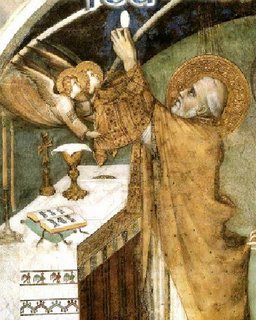"I Want to Go To A NEW TESTAMENT Church" (Part 1) Be Careful What You Wish For!

Early in my born-again years, I desired to go to a church that "preached the Word" and resembled the church of the New Testament. Even then, I knew that the water closest to the head of the stream would be the purest. Most of the books of the New Testament were written between 50 and 145 A.D., and provided many details of that early church, but were not written as the "Official Handbook and History of the Early Church. "
So how do I know for sure that my church is worshipping like a "New Testament Church?" Well, we know something of the early church behavior in that they met together for the "breaking of the bread" in Acts and had a meal together that Paul describes as the body and blood of Christ in
1 Corinthians and Christ himself in John told us to eat His body and drink his blood. Granted, I am "cherry picking" the scriptures to prove my point here, but unfortunately, the New Testament wasn't written with a complete order of service such as a church bulletin we have nowadays to know what is going to happen in the service.
So we turn to recorded history to get a better picture of the early church. It turns out the church was organized into bishops and presbyters (priests) who possessed the succession from the apostles. So apostolic succession wasn't a Catholic myth, but was actually an important criteria for the early church in discerning what was a legitimate church. Already, heretical sects were springing up and the ability of a bishop to trace his roots to Peter and the apostles was key for determining orthodoxy.
Ignatius of Antioch (110 AD)
"Take note of those who hold heterodox opinions on the grace of Jesus Christ which has come to us, and see how contrary their opinions are to the mind of God. . . . They abstain from the Eucharist and from prayer because they do not confess that the Eucharist is the flesh of our Savior Jesus Christ, flesh which suffered for our sins and which that Father, in his goodness, raised up again. They who deny the gift of God are perishing in their disputes" (Letter to the Smyrnaeans 6:2–7:1 )
St. Irenaeus said in his Treatise Against Heresies in the 2nd Century:
"Therefore it is necessary to obey the presbyters who are in the Church, those who I have shown, possess the succession from the apostles; those who, together with the succession of the episcopate, have received the certain gift of truth, according to the good pleasure of the Father. But, to hold in suspicion others who depart from the primitive succession, and assemble together in any place whatsoever."
St Cyril of Jerusalem (4th Century) said:
"and if ever you are sojourning in cities, inquire not simply where the Lord's House is (for the other sects of the profane also attempt to call their dens houses of the Lord), nor merely where the church is, but where is the Catholic Church. For this is the peculiar name of this Holy Church, the mother of us all."
So the early church didn't just meet "wherever two or more were gathered" and flipped open a Bible for a Bible study? I guess not, since there were no Bibles floating around but the early Christians did assemble in a place called the Catholic Church that had received the gift of God's truth through "primitive succession." The notion of just meeting together on one's own initiative and authority and calling it church was not acceptable or legitimate in the early church as St. Cyril clearly tells us.
St. Augustine (Late 4th Century) said:
"[T]here are many other things which most properly can keep me in [the Catholic Church’s] bosom. The unanimity of peoples and nations keeps me here. Her authority, inaugurated in miracles, nourished by hope, augmented by love, and confirmed by her age, keeps me here. The succession of priests, from the very see of the apostle Peter, to whom the Lord, after his resurrection, gave the charge of feeding his sheep [John 21:15–17], up to the present episcopate, keeps me here. And last, the very name Catholic, which, not without reason, belongs to this Church alone, in the face of so many heretics, so much so that, although all heretics want to be called ‘Catholic,’ when a stranger inquires where the Catholic Church meets, none of the heretics would dare to point out his own basilica or house" (Against the Letter of Manicheus Called "The Foundation" 4:5 [A.D. 397]).
These are just a few samples from the massive volumes of writings of this early Church that describe its organization, its succession from Peter and gives us a "snapshot" of what it "looked like." So when I was 14 years old and went looking for a "New Testament Church" I didn't need to look further than Our Lady of Notre Dame (my childhood parish). Because, this is the same Church that could trace its roots to the "primitive church" and still carries forth the "gift of truth."
After all, the Bible tells us that the Church is the pillar and foundation of Truth. 1 Tim 3:15
Labels: Apologetics, Church Fathers, early church

0 Comments:
Post a Comment
Home